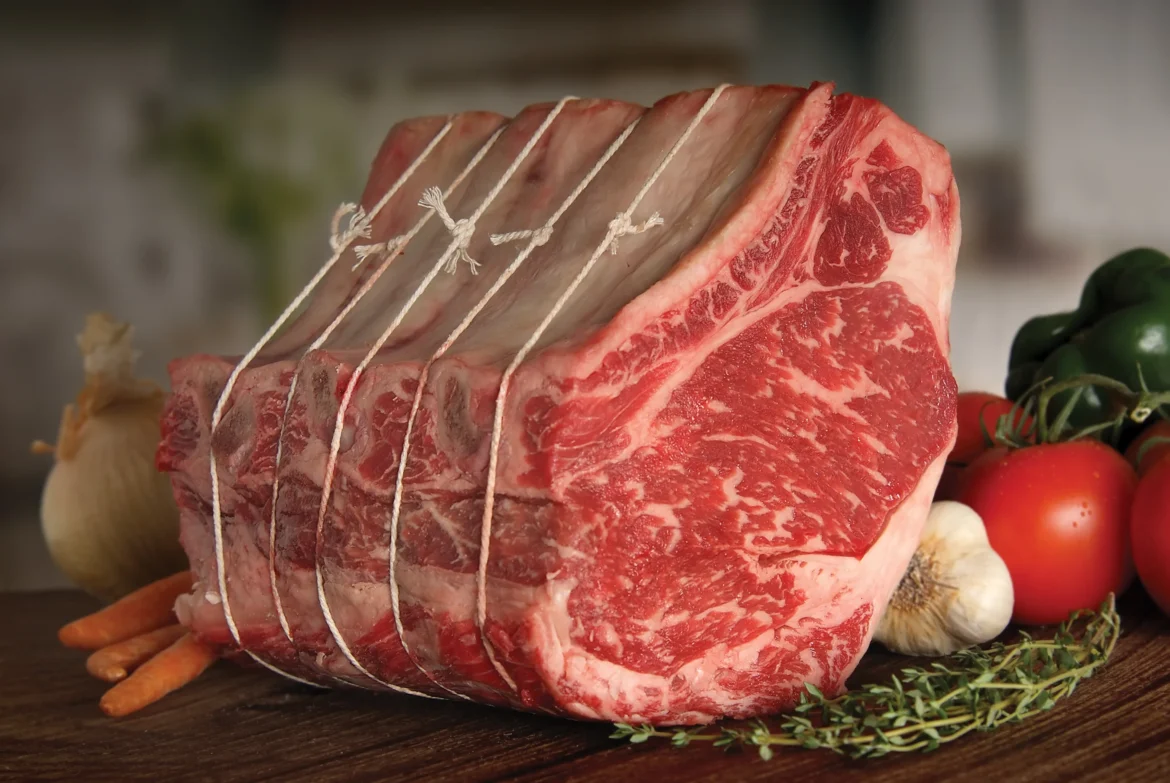Prime rib (Standing Rib Roast) is a cut of meat that demands respect and rewards simplicity. The rich marbling glistens under the light, promising a melt-in-your-mouth tenderness. When cooked right, the first bite is a revelation—succulent, buttery, and bursting with deep, beefy flavor. My approach is straightforward: kosher salt and freshly ground black pepper are all you need. As the roast cooks, the salt dissolves into the fat cap, which slowly renders, basting the meat from within. The aroma fills the air, an irresistible blend of caramelized beef and savory richness, signaling that something extraordinary is in the making.
Many people opt for prime rib as a luxurious centerpiece for holiday meals, especially Easter, in place of the more traditional ham. Its deep, savory aroma and rich flavor make it an unforgettable choice for special gatherings.
Choosing the Right Prime Rib Roast
For a gathering of six people, a 4-5 pound prime rib roast is ideal, allowing for generous portions while leaving some leftovers. You can expect about one pound per person for bone-in cuts and slightly less for boneless.
- Bone-in vs. Boneless: A bone-in roast provides extra flavor and insulation, helping the meat cook evenly. The bones act as a natural roasting rack, keeping the meat elevated as it cooks. If choosing boneless, the roast will cook slightly faster, but the taste remains exceptional.
- Talk to Your Butcher: Ask your butcher for a Frenched roast if you want a more elegant presentation with exposed bones. Additionally, inquire whether the rib section between the bones has been removed—some butchers will separate and tie the bones back on for easier carving later.
The Importance of an Internal Meat Thermometer
Cooking prime rib without a meat thermometer is a gamble—don’t take the risk! A reliable digital probe thermometer is essential to ensure your roast reaches the perfect internal temperature without overcooking. Insert the thermometer into the thickest part of the roast, avoiding bone, and monitor the temperature throughout cooking. The difference between perfection and disappointment is just a few degrees, so don’t leave it to guesswork.
Understanding Prime Rib Ratings

Before getting into the cooking process, it’s important to understand the different grades of prime rib:
- USDA Prime: The pinnacle of quality, with generous marbling that melts during cooking, bathing the meat in natural juices. Each slice is impossibly tender, offering a rich, almost buttery mouthfeel.
- USDA Choice: A fantastic balance of marbling and meat, delivering both tenderness and robust flavor. Slightly less rich than Prime but still an excellent choice. This is my Go-to choice.
- USDA Select: Leaner with minimal marbling, meaning less self-basting during cooking. While still flavorful, it requires careful attention to avoid dryness.
Often, the price difference between these grades isn’t substantial, so if you’re looking for the best eating experience, Prime or Choice is the way to go.
Ingredients:
- 4-5 lb bone-in or boneless prime rib roast
- 2 tablespoons kosher salt
- 1 tablespoon freshly ground black pepper
Instructions for Prime Rib:
- Preparation: Remove the prime rib from the refrigerator at least two hours before cooking to let it come to room temperature. This ensures even cooking and helps the seasoning penetrate deeper into the meat.
- Seasoning: Generously coat all sides of the roast with kosher salt and freshly cracked black pepper. As the salt sits, it starts drawing out moisture, which then dissolves back into the meat, intensifying its natural flavors.
- Cooking:
- Preheat your oven to 250°F (120°C).
- Place the roast fat cap facing up on a rack in a roasting pan, allowing the fat to slowly baste the meat as it renders.
- Insert an internal meat thermometer into the thickest part of the roast, ensuring accurate temperature tracking.
- Roast until the internal temperature reaches:
- 120°F (49°C) for rare – deep red, silky, and buttery soft
- 130°F (54°C) for medium-rare – warm, pink center, incredibly juicy
- 140°F (60°C) for medium – slightly firmer, but still wonderfully tender
- This will take about 3 to 4 hours, depending on the size of your roast.
- Resting: Remove the roast from the oven and let it rest for 15-20 minutes. This is crucial—cut too soon, and the juices spill out, leaving the meat drier than it should be. Resting allows the juices to redistribute, ensuring each bite is as succulent as the last.
- Torch Finish: Instead of a high-heat blast in the oven, I use a culinary torch to sear the exterior, creating a golden-brown, crackling crust without overcooking the inside. Hold the torch 1-2 inches from the surface, using a medium-high flame and moving in circular motions to evenly crisp the exterior. This process should take about 1-3 minutes, depending on the size of the roast. As the flame kisses the surface, the scent of roasted beef intensifies, promising an unforgettable eating experience.
Accommodating Different Preferences
- For medium or well-done slices: After slicing, place a portion in a hot pan with a touch of beef drippings or butter and sear each side for a minute or two until it reaches the desired doneness.
- For rare to medium-rare lovers: Serve as is, showcasing the meat’s natural tenderness and juicy perfection.
Final Thoughts
This method highlights the pure, unadulterated flavor of prime rib while ensuring a tender, luscious roast with a crackling, restaurant-quality crust. No need for extra herbs or spices—just quality meat, salt, and pepper. But if you want to experiment, a sprig of rosemary or a hint of garlic could be your own signature twist. Either way, this approach guarantees a show-stopping prime rib that engages all the senses—the sight of the deep caramelized crust, the mouthwatering aroma of roasted beef, and the indulgent, velvety texture of each bite. It’s simple. It’s extraordinary. And it’s the only way I make prime rib.
Also See:
healthy-roasted-sweet-potatoes-a-simple-and-nutritious-recipe/

